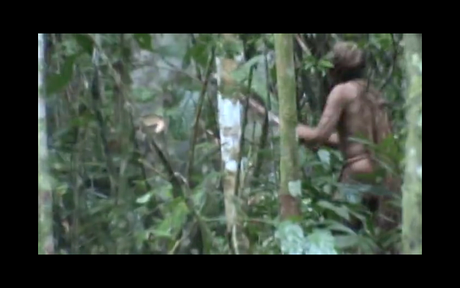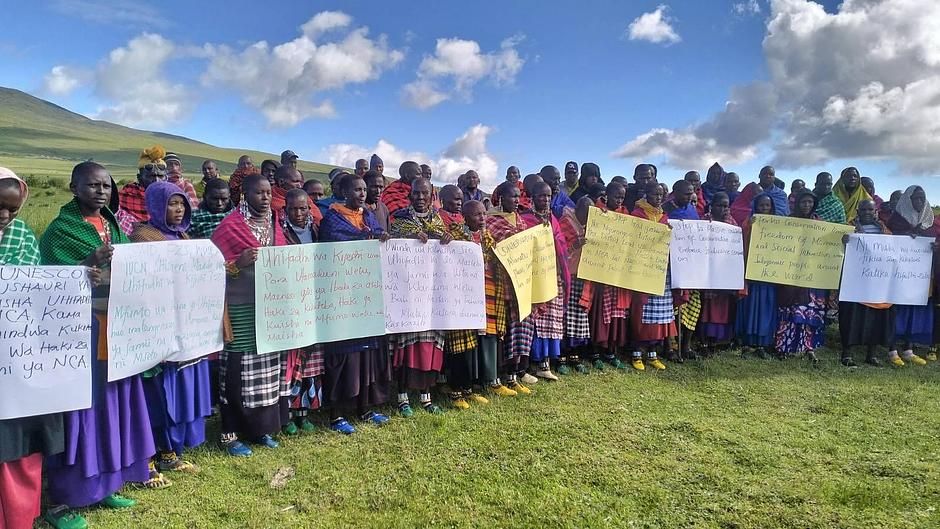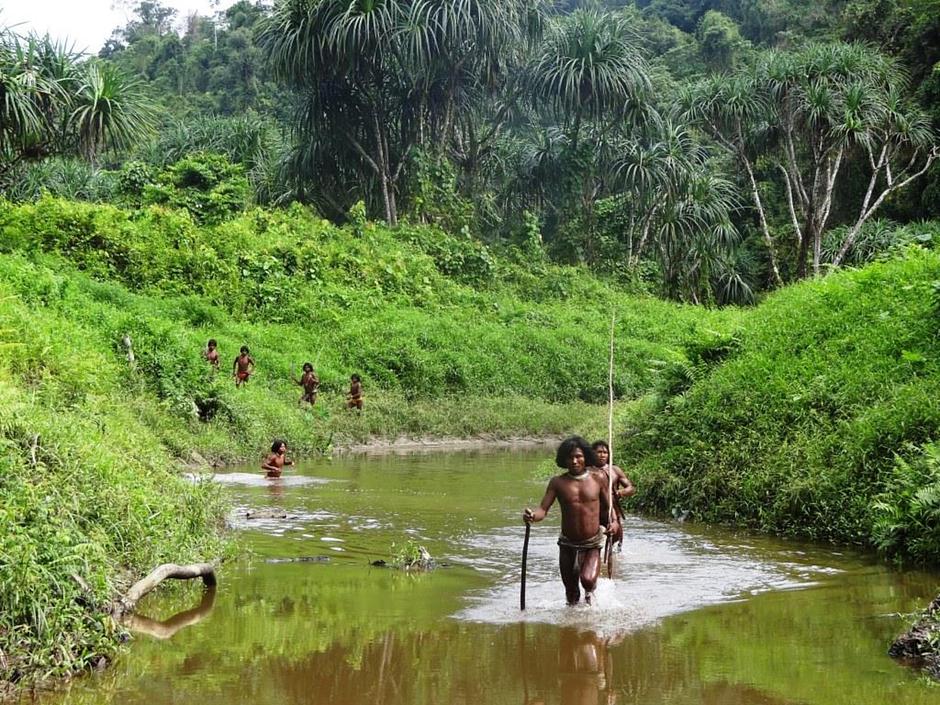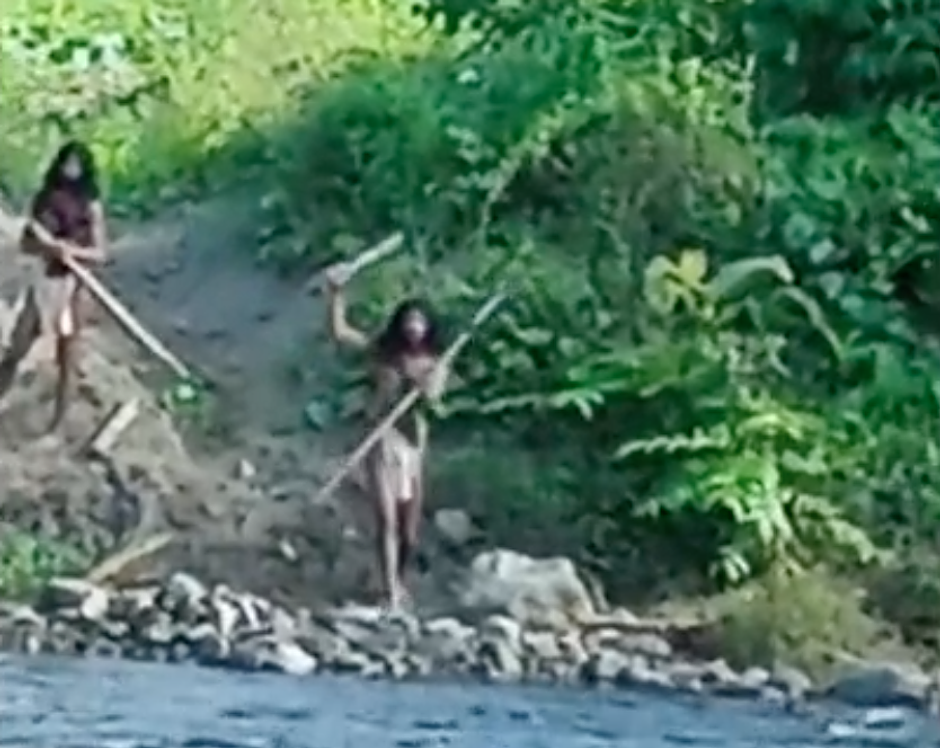This man is the last of his tribe. Let him live in peace.

by Fiona Watson, Director of Research and Advocacy
A version of this article was published by The Guardian on July 27, 2018
This man is the last of his tribe. He survived the waves of genocidal attacks by loggers and ranchers in the 1970s and 80s which wiped out his family and his community, and many neighboring communities too. His survival is testament to his own resilience, but also demonstrates the real and profound good that properly protecting the land of uncontacted peoples can do.

I was standing on the edge of a patch of Amazon rainforest in Brazil. As far as the eye could see, there was nothing but monochrome; vast soy plantations and tamed pasture for cattle. I peered into that last oasis of Amazonian green; somewhere in there was a person, a survivor, who was living through the unimaginable.
This man was the Last of his Tribe. He had survived the waves of genocidal attacks in the 70s and 80s, as loggers and ranchers bulldozed their way through the forest denuding it of trees and life. These invaders murdered his entire family, his community, and neighbouring communities too. Fleeing the guns and hiding in the forest was his only survival strategy; to live out his remaining days totally on his own, hunting wild game and growing a few vegetables and fruits in his small garden.

One of the few outsiders ever to set foot on his land, I was there in 2005 with FUNAI, the governmental protection agency for tribal peoples in Brazil. I was with their Indigenous land protection team as part of my work for Survival International, the global movement for tribal peoples. I was not there to make contact with this man; I was there to help ensure the security of his territory and protect his right to live as he has chosen to. Survival International believes the choice whether or not to make contact with mainstream society must only be made by the people themselves; it is never up to others to decide for them.
Peering into that forest, 13 years ago, I never imagined this uncontacted man would live for long – the odds were too stacked against him. Yet last week, stunning video footage was released by FUNAI. The footage shows this man, the Last of his Tribe, strong, healthy, and very much alive. His survival is testament to his own resilience, but also demonstrates the real and profound good that properly protecting the land of uncontacted peoples can do. This fragment of rainforest must be protected by FUNAI for as long as he is alive. His presence alone keeps this small piece of rainforest safe from the rapacious loggers and ranchers surrounding it. The forest in turn keeps him safe in his chosen lifestyle, hiding from the rest of the world because experience has taught him to fear it.
He is not alone in this fear. There are more than one hundred uncontacted peoples living on Earth today. They are not “lost”, “Stone Age” or in any way trapped in a “land that time forgot”. They live in the here and now. They are aware of the outside world, use and adapt outside goods for their own purposes and may engage sporadically with contacted tribes nearby. They choose to have no interaction with the mainstream society, often because of the catastrophic violence and disease such contact has brought to their people in the past.
Uncontacted peoples are supreme conservationists with the lightest footprint on our planet: from the Amazon to the Chaco, they protect some of the world’s last and most biodiverse forests. They have developed extraordinary skills and have unrivalled knowledge of their universe. Above all they are contemporary peoples who like any of us want to live well and in peace.

This particular uncontacted man, the Last of his Tribe, has survived thanks to his own resourcefulness, but two other factors have been essential to his longevity. The dedication of the FUNAI fieldworkers who constantly keep an eye on his land, and the power of public opinion galvanized by Survival and its supporters which ensures this area’s ongoing protection. Neither of these would be possible if it weren’t for footage like this, showing uncontacted people alive and flourishing. Firstly, FUNAI must continue to demonstrate conclusively that he is alive in order to retain the legal restriction that protects both him and the forest itself from destruction. This footage also counters false claims by anti-Indigenous politicians, who say that FUNAI invents uncontacted people to get more money from the government. Finally, images are a wake-up call for the world; they galvanise the public to act in support of uncontacted tribes and hold to account governments and big business who would steal their land and end their lives.
Not since the dark days of Brazil’s dictatorship have the country’s Indigenous peoples been under such great threat. One of the main candidates in the presidential elections this October is Jair Bolsonaro, a right wing ex-military nationalist, who in the past has said “It is a shame that the Brazilian cavalry has not been so efficient as the Americans who exterminated the Indians.” As we speak, a congress dominated by agribusiness and evangelicals is currently mounting unprecedented legislative attacks on Indigenous rights, to steal their lands and convert their souls. The government has already slashed the budget of FUNAI, exposing Indigenous peoples to frightening renewed threats of land theft, invasion, attack and annihilation.
To me, there is no greater symbol of our rich human tapestry than uncontacted tribes. To know they are out there gives me hope, simply because of who they are and what they represent. Who are we to judge how they live? We don’t need to know their name, their language, their religion, their history. They are humans; they are there and they have a right to exist. Let them live.
__________
More than 150 million men, women and children in over 60 countries live in tribal societies. Find out more about them, the struggles they face, and how you can help – sign up to our mailing list for occasional updates.





